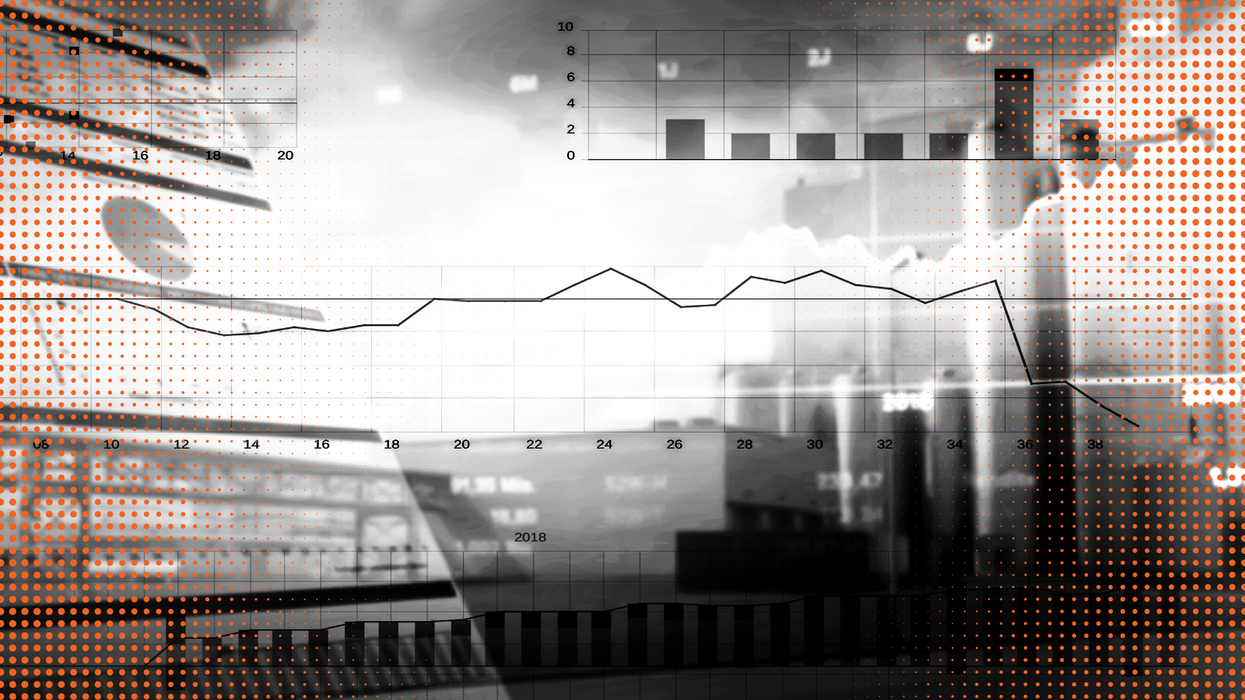Economy
30 May 2023
Inflation, consumer spending ticked up in April: PCE
Consumer sentiment fell in May, indicating growing anxiety about a downturn.

Consumer sentiment fell in May, indicating growing anxiety about a downturn.

Summer is here, but with it comes a reminder that the economic picture isn’t changing for the consumer.
On Friday, new data from the Personal Consumption Expenditures Index showed that core inflation ticked up to 4.7% year-over-year in April, up slightly from 4.6% in March. On a monthly basis, core inflation rose 0.4%, compared with 0.3% in March.
The increase means inflation showed signs of growing in April, even as the narrative presented in recent months has been one of slowing price increases.
Meanwhile, consumer spending jumped 0.8% on a monthly basis. It’s a sign that people are continuing to shop, even as inflation hangs around like the humidity in August.
What it means for the Fed: The inflation uptick gives the Federal Reserve new challenges as it weighs whether to pause a monthslong campaign of interest rate hikes that are designed to bring down inflation. Inflation had been cooling as the Fed lowered the size of the hikes in recent months. Now, it is considering whether to stop the hikes, but is confronted with fresh evidence that inflation moved back up. Should it do more to cool inflation? It's a tricky question, especially given the fact that interest rate hikes take months to work their way through the economy. While PCE is the preferred measure of inflation by the Fed’s key committee, members will have fresh data on inflation and consumer spending from other indices, such as the Consumer Price Index, that are set to be released in the next two weeks when they meet on June 13.
Elsewhere, there are signs that the consumer mood is starting to dampen. Consumer sentiment fell 7% in May, as the debt ceiling crisis dragged down spirits. The University of Michigan’s index had been rising for months after hitting all-time lows in June 2022. But May’s decline erased half of the gains made in that time.
In particular, consumers appear to be fearing a rough road ahead. Consumers’ outlook for the year ahead fell 17%, while long-run expectations plunged 13%.
“Consumers are concerned that any recession to come may cause lasting pain,” wrote University of Michigan Survey of Consumers Joanne Hsu.
Notably, however, there were more stable views on inflation. Expectations for the year ahead fell to 4.2%, as compared with 4.6% last month. Uncertainty about inflatin also fell significantly to its lowest level in nearly two years.
“This suggests that consumer views over short-run inflation may be stabilizing following four months of vacillation,” Hsu wrote.
Long-run inflation expectations remained within the range of 2.9%-3.1%, as they have been for months.
Labor disputes on the West Coast could cause further disruption heading into peak season.
When the first half of 2023 is complete, imports are expected to dip 22% below last year.
That’s according to new data from the Global Port Tracker, which is compiled monthly by the National Retail Federation and Hackett Associates.
The decline has been building over the entire year, as imports dipped in the winter. With the spring, volume started to rebound. In April, the major ports handled 1.78 million Twenty-Foot Equivalent Units. That was an increase of 9.6% from March. Still it was a decline of 21.3% year over year – reflecting the record cargo hauled in over the spike in consumer demand of 2021 and the inventory glut 2022.
In 2023, consumer spending is remaining resilient with in a strong job market, despite the collision of inflation and interest rates. The economy remains different from pre-pandemic days, but shipping volumes are beginning to once again resemble the time before COVID-19.
“Economists and shipping lines increasingly wonder why the decline in container import demand is so much at odds with continuous growth in consumer demand,” said Hackett Associates Founder Ben Hackett, in a statement. “Import container shipments have returned the pre-pandemic levels seen in 2019 and appear likely to stay there for a while.”
Retailers and logistics professionals alike are looking to the second half of the year for a potential upswing. Peak shipping season occurs in the summer, which is in preparation for peak shopping season over the holidays.
Yet disruption could occur on the West Coast if labor issues can’t be settled. This week, ports from Los Angeles to Seattle reported closures and slowdowns as ongoing union disputes boil over, CNBC reported. NRF called on the Biden administration to intervene.
“Cargo volume is lower than last year but retailers are entering the busiest shipping season of the year bringing in holiday merchandise. The last thing retailers and other shippers need is ongoing disruption at the ports,” aid NRF Vice President for Supply Chain and Customs Policy Jonathan Gold said. “If labor and management can’t reach agreement and operate smoothly and efficiently, retailers will have no choice but to continue to take their cargo to East Coast and Gulf Coast gateways. We continue to urge the administration to step in and help the parties reach an agreement and end the disruptions so operations can return to normal. We’ve had enough unavoidable supply chain issues the past two years. This is not the time for one that can be avoided.”